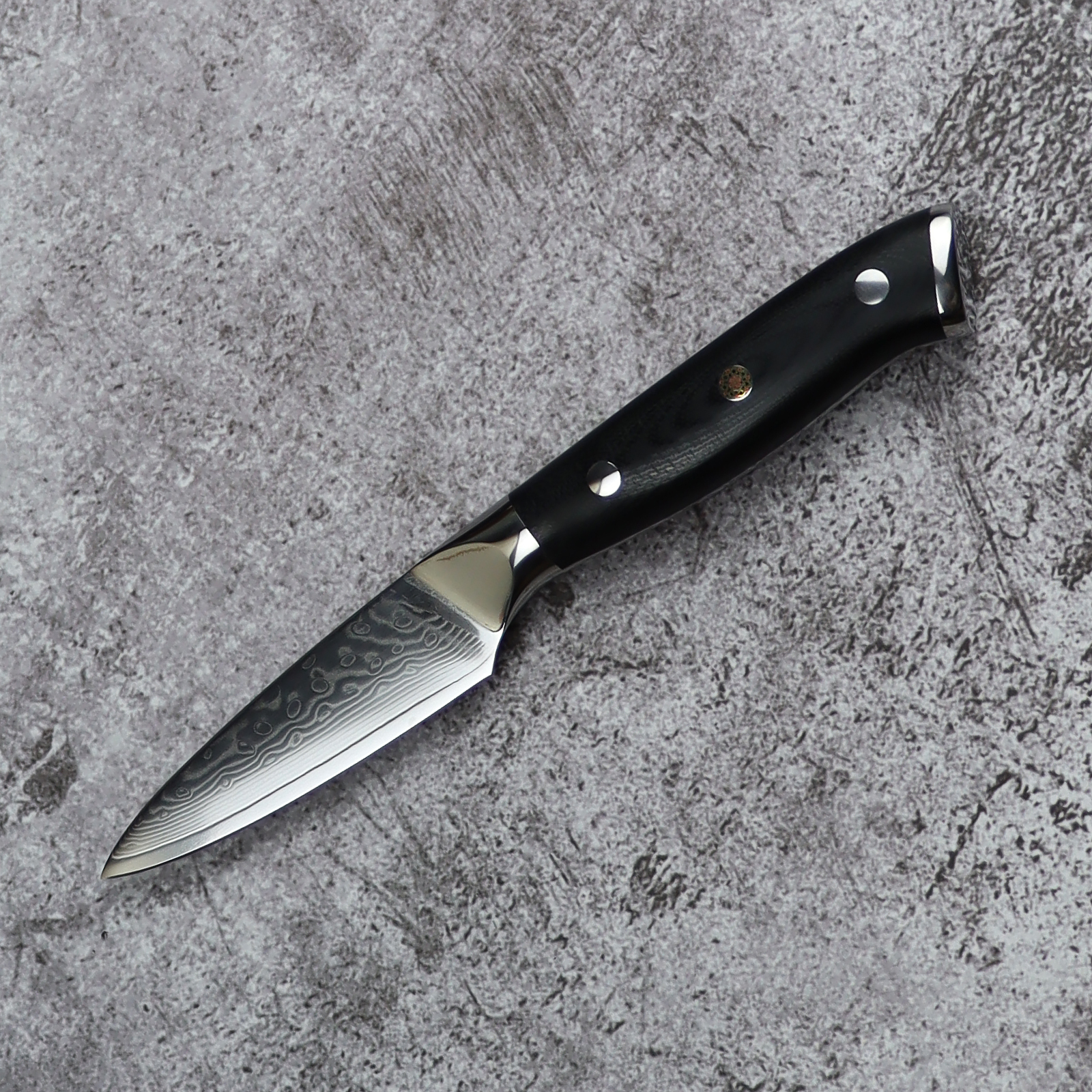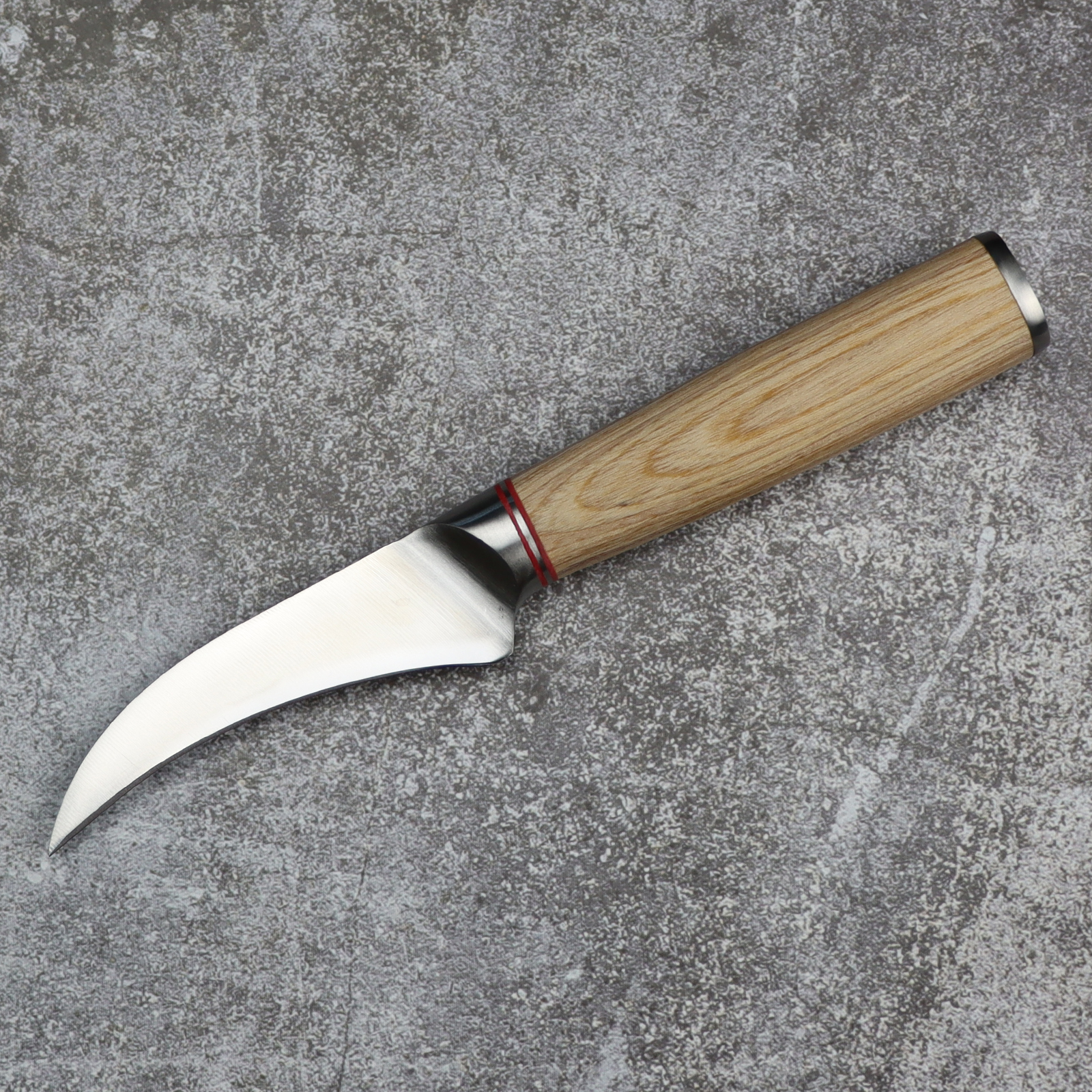What Is a Paring Knife Used For?
Feb 20,2023 | Fzkaly
Have you ever struggled to peel or de-seed a delicate fruit or vegetable with a larger knife? Do you find yourself frequently needing to remove the eyes or blemishes from produce, or make precise cuts for garnishes? Can you imagine the satisfaction of perfectly peeled fruits and vegetables, expertly trimmed meats, and beautifully crafted garnishes with just the right tool at your fingertips? Now, elevate your kitchen game with a paring knife that will make your prep work easier, faster, and more precise.
What is a Paring Knife?
A paring knife is a small, sharp knife with a pointed tip and a straight or slightly curved blade, typically 2-4 inches long.
_1080x.jpeg?w=1000&h=1000)
Compared to other knives in the kitchen, such as chef knives or utility knives, paring knives are smaller and more lightweight, making them easier to handle for precision work. They also have a shorter blade, which allows for more control and precision when cutting small or delicate items. Additionally, the pointed tip of a paring knife makes it useful for tasks such as removing stems or seeds, and for creating decorative cuts or designs.
What is a Paring Knife Used For?
A paring knife is a versatile and essential tool in the kitchen, used for precision tasks that require intricate cuts and detail work. Paring knives are typically used for tasks such as peeling, trimming, and shaping fruits and vegetables, as well as other tasks such as deveining shrimp, removing seeds, and coring tomatoes. Below, we will list eight common scenarios for using a peeling knife.
Peeling Fruits and Vegetables
One of the most common uses for a paring knife is peeling produce. It's perfect for removing the skin from fruits and vegetables like apples, potatoes, and carrots.
Removing Seeds and Cores
A paring knife is perfect for removing the cores from fruits like apples or pears, and for scooping out the seeds from vegetables like jalapenos.
Trimming
The small size and precise blade of a paring knife make it ideal for trimming fat, cutting off gristle, and removing any unwanted pieces from meat.
Detail Work
When it comes to precise cuts and detail work, the paring knife is the tool of choice. Whether you're trimming the fat from a piece of meat or creating a work of art with fruits and vegetables, a paring knife provides the precision you need.
Peeling and Cutting Garlic
The thin, pointed blade of a paring knife is perfect for peeling garlic cloves and then mincing them into small pieces.
Cutting Citrus
A paring knife is perfect for cutting the thin membranes between citrus sections and removing seeds.
Creating Garnishes
When it comes to creating beautiful garnishes for your dishes, a paring knife is essential. It is perfect for creating intricate designs from fruits and vegetables.
Shaping and Slicing Cheese
A paring knife is perfect for shaping and slicing small pieces of cheese. It provides the control you need for even the most delicate slices.
When Buying a Paring Knife, What Should You Look For?
When it comes to buying a paring knife, from the blade material to the handle design, each aspect plays a role in the knife's performance and durability. There are a few key things to consider to ensure you get the right knife for your needs.
Blade Material
The blade material is crucial in determining the knife's strength, sharpness, and resistance to wear and tear. High-carbon stainless steel is a popular choice due to its durability and rust resistance. Look for a blade that is made from high-quality materials and is thick enough to withstand heavy use.
Blade Length
Paring knives usually have a blade length between 3 and 4 inches. However, the blade length depends on personal preferences and intended use. For instance, a shorter blade is ideal for peeling and trimming small fruits and vegetables, while a longer blade can handle more substantial tasks.
Handle Material
The handle of a paring knife is as important as the blade. It should be comfortable to hold, slip-resistant, and provide a secure grip. Wood handles provide a traditional look and feel, but they require more maintenance than other materials. Plastic handles are affordable, easy to clean, and durable, while composite materials offer a balance of durability and comfort.
Blade Shape
The blade shape of a paring knife is another essential feature to consider. Straight blades are ideal for precise cuts and peeling, while curved blades are better suited for tasks that require a rocking motion, such as chopping herbs. A bird's beak paring knife is a specialty option with a unique curve that is ideal for intricate cuts and decorative garnishes.
Tang
The tang is the metal part of the blade that extends into the handle. A full tang knife has the metal running the entire length of the handle, which provides more balance and strength. A partial tang knife has a metal extension that only partially extends into the handle, making it lighter and more comfortable to use.
By taking the time to research and compare your options, you can find a paring knife that is comfortable to use, durable, and up to the task of all your culinary needs.
How to Care for a Paring Knife?
A paring knife as an important tool for kitchen work, with proper care, it can last for many years. Here are some tips for caring for your paring knife:
1. Do not put it in the dishwasher: Paring knives should not be put in the dishwasher. The high heat and strong detergent can damage the blade and handle, and may cause it to dull or rust.
2. Wash by hand after use: After using your paring knife, wash it by hand with warm water and mild soap. Avoid using abrasive sponges or scrubbers, which can scratch the blade.
3. Dry with a clean towel: After washing, dry the blade and handle with a clean towel. Avoid air-drying, as this can lead to water spots and rust.
4. Use a knife sheath to protect the blade: When storing your paring knife, use a knife sheath or blade guard to protect the blade from damage. This will also help prevent any accidental cuts when reaching into a drawer or knife block.
5. Keep away from children: Paring knives are sharp tools and should be kept out of the reach of children. Always store your paring knife in a safe and secure location.




